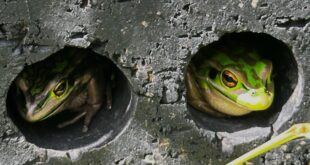Gabriel Foxx, a participant in the first course run by the Pluriversity at the Lithgow Transformation Hub, recalls his experience:
The university had been closed for some time in Lithgow, but as I arrived there was a rustle of something new through the halls there. Things were shifting, and it was clear that this place was undergoing change to becoming a source of change itself: soon to be reborn as Maldhan Ngurr Ngurra – the Lithgow Transformation Hub.

Arriving in the classroom, set just off the main street of Lithgow where the winter sunlight filtered through wide windows with a kaleidoscopic effect, I felt yet more weight added to the sense of apprehension which I had already been feeling. New faces, new ideas, and over all I wasn’t certain as to what I should be expecting from something so entirely new to me. Would it be a study in agriculture, or would it be a complicated skill that I had no hope of learning in such a short period of time? What even was Permaculture? Where to look? What to expect? Why was I here in the first place?

We were thrilled to have access to the former campus for our classes! This is Zeph enjoying the view.
This last was not such a difficult question to answer. I had been invited by Lis Bastian, whom I had met some months earlier through Create Lithgow – a writing workshop that had immediately captivated my interest to no end. When I had heard that she was teaching a PDC – or Permaculture Design Course – I couldn’t resist but to be drawn in once more to the pilot session I was attending presently. And, indeed, this first day ended with what felt like so many more new questions than any answers. Information and ideas ran free, and, rather excitingly, I had learnt that later we would be heading to Lithgow’s PCYC (Police Citizens Youth Club), and practicing what we were studying there, which sounded far more engaging than what I had expected.

Writing Workshop – I’m second from the left!
Unsurprisingly, I was more than eager to return the next day, and the next, so that by the dawn of the second week I was slipping into calling the people with whom I was learning my friends. Curious, given the fact that we had all come to the course expecting to learn entirely different things, and yet had come together nevertheless, even as the differences among us were pleasantly obvious. From outside, we were intermittently visited by many veterans of the field we were studying, some of whom were among the mothers and fathers of modern permaculture, and others who were using its principles, and respect for nature, in their own lives. Those that were kind enough to share their individual experiences included Lithgow Environment Group’s Julie Favell – a photographer for Destination Pagoda; soil analyst Robin Shannon; and, perhaps most notably, Rowe Morrow – author of some of the most prominent publications in the study of Permaculture to date.

Annabel interviewing Julie Favell

Learning about soil with Robin Shannon

Learning about Permaculture and Economics
Between conversations with these individuals, some took to study and thought, while others preferred to learn with their eyes and hands – getting in touch with nature itself. During our time together, we often took up and left the Hub for excursions. This was an exciting change from brainstorming and listening. We began by visiting a permaculture property in the Kanimbla Valley. It was the home of Matt Anslow, the co-founder of Love Makes a Way – the largest faith-based civil disobedience movement in Australia’s history. He had built a life from scratch for himself and his family upon several glorious acres.


With Matt in front of the Banksy mural on his property
We also visited Kevin McClusker’s Killinbinbin Nursery on the slopes of Dargan, where he told us his story of surviving the 2019 bushfires.

Looking at the swimming pool Kevin McClusker converted into a pond for wildlife after the fires
Our eyes widened in the company of the unbelievably inspiring and heart-warming Andy Stevenson at Vanam Retreat on the Darling Causeway – whose permaculture property had also survived the fires as a result of his extraordinary water management.

With Andy at Vanam Retreat
Additionally, after a long week of respite from bitter weather, we visited community-run sites where what we were learning had been in practice for many years, such as the Katoomba and Blackheath Community Gardens, and Eskbank House.

Katoomba Organic Community Garden

The Greenhouse at Blackheath Community Farm

We learnt seed saving in the heritage garden at Eskbank House, Lithgow

The Quarry Garden in Blackheath
We even attended the Gang Gang Gallery in Lithgow to learn about the exhibition there, Destination Pagoda, which focused upon the more ancient natural aspects of our region, namely the ‘pagodas’: a series of unique rock formations in what is called the Gardens of Stone.

By this time we had spent quite a while on the road, however, and before long most of us were itching for action and to get our hands dirty – testing what we had learnt on the real earth beneath our feet. We finally headed off for the PCYC to get our first glimpses of the place that we would be helping to transform. We had been given creative lease of the property to conduct a ‘Permablitz’ – changing what had once been little more than a mess of hard-to-maintain grass and wood into something so much more enrapturing and entertaining for the after-school children the Club cared for.

We did it!
On what would be our final outing, we also visited Terrie Wallace’s massive property in the Capertee Valley, where it became clear exactly how true permaculture’s principles were even on a very large scale. Wallace and her husband had maintained an ethos of environmentally-aware livestock farming since they had bought the property, running against the traditions of chemical-laden agriculture. Like everyone else, they were currently enduring a rodent plague, but had weathered the drought by using Natural Sequence Farming – understanding how the landscape originally operated as a Chain of Ponds that spread water across the land.

At Terrie Wallace’s property in the Capertee Valley
We then returned to work on regenerating the PCYC site.
To achieve this, we would be finding as many remedies and giving as much aid to the land as we could in the little time we had, and later would be forming teams to plan into the future. While we still had to run our decisions by the management, it was a great responsibility, and privilege, knowing that we had their trust to work on something that had been the way it was for such a long time. Each visit we made felt as though we were coming closer and closer to regenerating the land we had been granted; conducting tests on the soil, and forming our own detailed maps of the premises that made us think of each part of the block as some friend or individual entity. There was something incredibly special about seeing these things we had been reading about and learning in theory, really, truly working, and knowing exactly how what we were doing was affecting the land.

We built compost bays
Toward our final week, we were to be found either hands on with the land, or working together in huddled silence, enraptured by our own ideas and ambitions for what was to come. The last few days were spent cleaning and polishing that which we had already achieved both on the grounds, and with our designs. Work was rapidly completed, papers were written up, and there was a sense of building excitement when we set down our shovels and pens for one last time to welcome the PCYC’s management to the Transformation Hub, and give speeches about our designs in an intense, proud moment that felt as though it would stick with us for the rest of our lives.

The sense of teamwork we had formed in such a short period was felt by all present as the ideas were presented, and tears were even shed by the speechless management when everything was at long last over.
But the benefit had not been entirely theirs. Twelve days over six weeks is not a long time, but in those hours we had all bloomed with new experiences; taking inspiration from the pure spirit of working in tandem with nature, society, and our own ambitions to form true, real communities and enterprises with one another. Just like the property, we had found a new life.

And there, as we parted ways for the final time, it was more clear than ever that the true principles of Permaculture are common sense and thoughtful observances of the world around us, paving a way to a better, more sustainable society.
Do you see things in the world around you that you have always wanted to change, but have never understood how you could? Do you spend time thinking about that which could be better, yet never seems to improve? If you do, Permaculture might just be for you. It isn’t just about farming, or science or chemistry, it is about changing the world – one broken habit, and one person re-connecting with nature, at a time.
Gabriel Foxx




